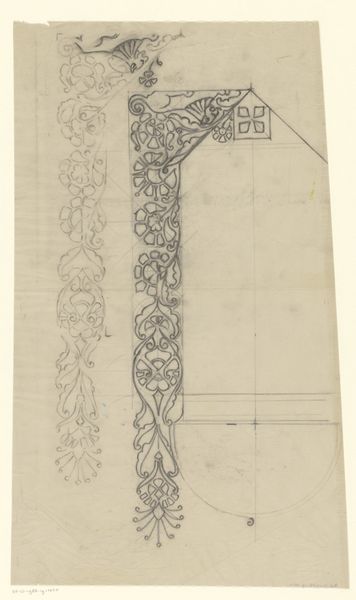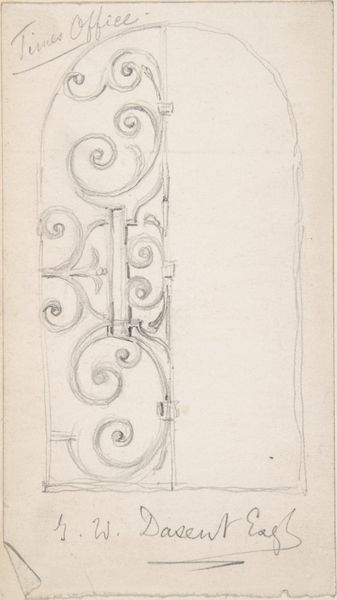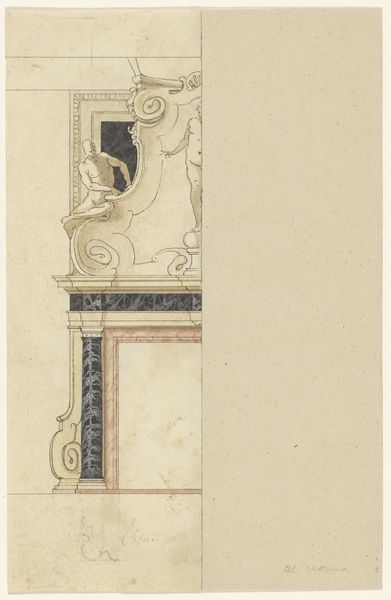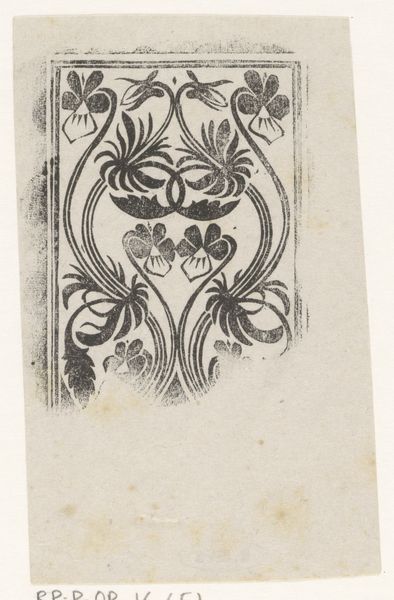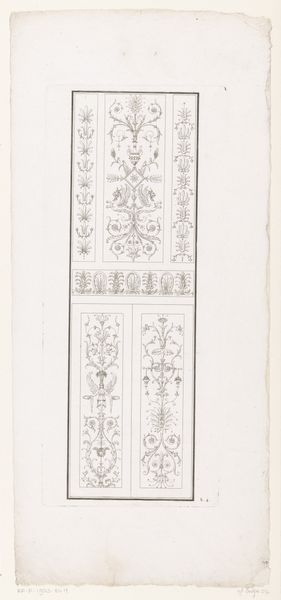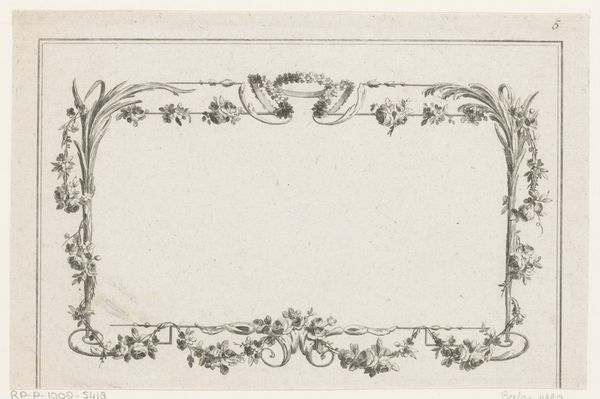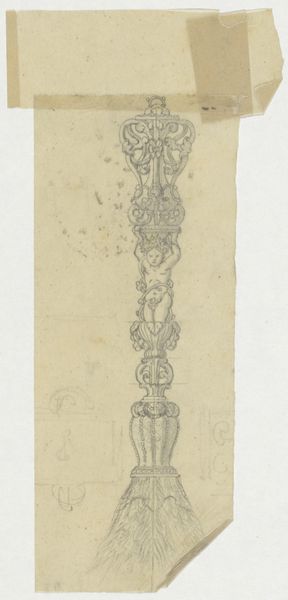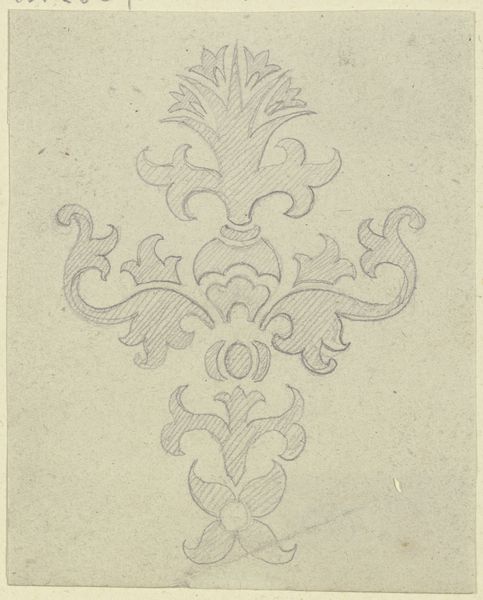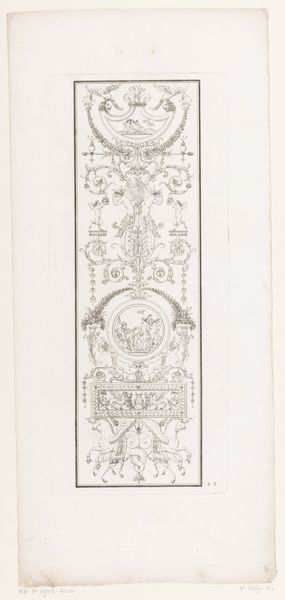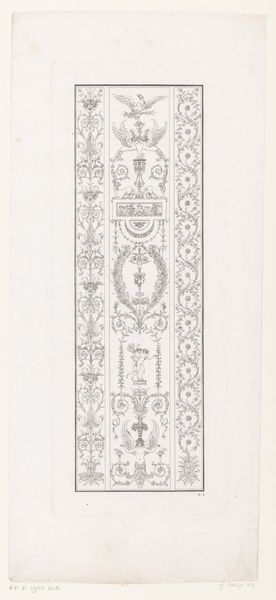
drawing, ornament, print, pencil
#
drawing
#
neoclacissism
#
ornament
# print
#
pencil sketch
#
form
#
geometric
#
pencil
#
line
#
decorative-art
Dimensions: sheet: 8 7/16 x 3 1/16 in. (21.4 x 7.8 cm)
Copyright: Public Domain
Editor: This is a drawing called "Design for a Frame," made sometime between 1743 and 1800 by Sir William Chambers. It looks like pencil on paper. The stark geometry of the frame contrasts so strongly with the lively floral flourishes… what symbols do you see operating in this piece? Curator: The contrast is key, isn't it? This is Neoclassicism, at its heart – a reaching back to the perceived purity of ancient forms, particularly Greek and Roman, but reinterpreted through a distinctly 18th-century lens. Think of it as cultural memory being actively reshaped. The geometric frame itself symbolizes order, reason, the Enlightenment ideals that were so central at the time. Editor: And the floral ornamentation? Is that simply decorative? Curator: Never "simply" decorative! Think of these flowing vegetal forms as a conscious echo of antiquity’s decorative vocabulary -- acanthus leaves, laurel wreaths. These aren’t merely pretty; they are carefully selected signifiers referencing ideals of virtue, victory, and enduring life from classical antiquity, while their stylized arrangement speaks to a distinctly Enlightenment sensibility of taming and ordering nature. Can you feel that tension in the drawing? Editor: I do. The geometry feels strong, almost…confining, yet the floral elements soften the edges. It’s a very controlled exuberance. So the artist is layering meaning through both form and imagery. Curator: Precisely! And think about what would have been placed within this frame: a painting, a mirror, perhaps a portrait. The frame, then, isn't just a border; it's a threshold, a carefully constructed lens through which we perceive whatever it contains. This reinforces that art and life in that era were performative spaces. It is also about shaping identity through symbolic association. Editor: So, this drawing reveals a lot about how people viewed the world during that era, not just as something to be seen, but as a carefully designed performance. I see the symbols so differently now. Thank you! Curator: Indeed. It prompts us to question what continuities with the past we are still visually engaging with and unknowingly perpetuating today. It's all encoded right there in a "simple" frame design.
Comments
No comments
Be the first to comment and join the conversation on the ultimate creative platform.
